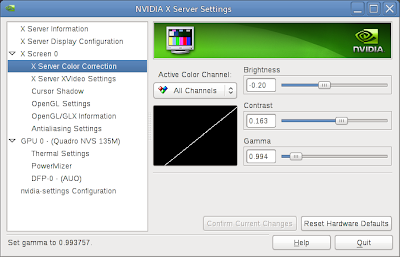I've used Chrome on Windows since the first public betas, and while it has been fast, simple and powerful, I never saw a compelling reason to switch from Firefox, of which I have been a faithful user and proponent since early betas as well. Until I decided to eat my own dog food and switch to Linux (specifically Fedora 12).
A picture is worth 1000 words, so without further ado check out the differences in rendering (click images to see full size). I'll update this post at some point with a full review of Linux browser options.
Google Chrome rendering Blogger
Firefox 3.5 rendering Blogger
For the fun of it, I took screenshots of some other Linux browsers. They look a lot like Firefox even though two use different rendering engines. Epiphany (bottom) and perhaps WebKit in general seems to do a little better at subpixel hinting.
Galeon, a good Gecko-based (like Firefox) browser for gnome
Konqueror, a full-featured KDE browser using KHTML
Epiphany, a Webkit-based (like Safari and Chrome) browser






